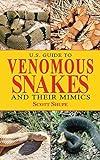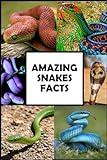Are you someone who’s always been fascinated or fearful of our slithery legless friends? Or are you planning to travel somewhere with venomous snakes? Maybe you are just looking to unlearn some common myths. Whatever the reason may be, it’s important to know the truth about venomous snake bites and how to treat them. In this article, we are debunking the most common myths and misinformation and setting the record straight. Let’s jump right in.

Debunking First Aid For Snake Bite Myths
When doing first aid on venomous snakebites it’s important to keep the victim calm and get medical treatment as quickly as possible. What you don’t want to do is make things worse, or waste time, with ineffective treatments based on myth. When we were researching for our article on avoiding snake bites while hiking we were surprised at how many dangerous myths were still being promoted by high-ranking blogs. We were also a bit embarrassed that there were several myths that we have believed in the past.
So first let us say that there is no reason to be embarrassed about believing in old wives’ tales and myths. Everyone does. All we can do is keep learning. So in that spirit, let’s examine the most common myths that we have encountered. If you know of any more please contact us on social media and let us know. We would love to keep adding to this post.
When dealing with snake bites, it’s crucial to dispel common myths about first aid. When we were doing research for our article on avoiding snake bites while hiking we were shocked at how many dangerous myths were being promoted by high-ranking blogs. So let’s put the record straight right here once and for all.
#1. Sucking Out Venom
This is one of the most common myths we have encountered. It suggests that sucking the venom from a bite can reduce the amount of venom that enters the bloodstream. In truth, this is not only ineffective but can also introduce bacteria into the wound and the mouth of the person applying suction. Venom spreads too quickly through the lymphatic system for this to be a viable first aid method. This myth is so widely believed that snake bite venom extractors are a big seller on Amazon. Save your money, they don’t work.
#2. Use of Tourniquets or Pressure
Using a tourniquet or pressure to slow down the spread of venom sounds like a common-sense first-aid treatment. In reality while it could be helpful in extreme situations it can cause severe tissue damage and lead to other more adverse effects. Their use may exacerbate the impact of venom, increase swelling, and in extreme cases may lead to amputation. Instead, keep the wound area still and seek appropriate treatment at the nearest hospital.
#3. Cutting Open a Snake Bite
This is one of the most common myths we have encountered. It suggests that sucking the venom from a bite can reduce the amount of venom that enters the bloodstream. In truth, this is not only ineffective but can also introduce bacteria into the wound and the mouth of the person applying suction. Venom spreads too quickly through the lymphatic system for this to be a viable first aid method. This myth is so widely believed that snake bite venom extractors are a big seller on Amazon. Save your money, they don’t work.
#4. Ice Packs Slow Venom Spread
Applying ice to a snake bite is thought to slow venom spread. Instead, ice can cause additional tissue damage and does not affect venom movement in the body. Keeping the bite area still and seeking the services of an emergency physician is the best practice.
#5. Electric Shock Treats Snake Bites
According to myth applying an electrical shock to the affected area can be used as a treatment for venomous bites. In our research we read several articles that made this myth seem very compelling. Sadly studies haven’t found any evidence that it’s helpful, and it may even delay wound healing. So while we can think of several good reasons to shock one of your camping buddies we can’t add snake bite to the list.
#6. Running Water Washes Away Venom
The myth is that running water over a snake bite can dilute or wash away venom. This is silly, as venom enters the lymphatic system very quickly. Even if you were standing under a waterfall when you were bitten it wouldn’t help at all. Immediate medical attention is necessary, and washing the wound should not delay seeking this help.
#7. You Should Drink Alcohol To Reduce The Pain
According to popular myth drinking alcohol will help after a snake bite. Depending on what you read the myth is that it either helps with pain or it’s supposed to help with the venom somehow. While a cold mojito might help with the pain, medical professionals say it’s a bad idea for several reasons. Alcohol is an anticoagulant and it can increase heart rate, both will speed the spread of venom.
#8. Snake Bites Can Be Treated at Home
Some people think they can treat bites effectively at home with first aid. While initial first aid can be helpful, medical treatment by qualified healthcare professionals is essential to reduce the symptoms.
#9. Antivenom Works for Any Snake Bite
This one is basically true in North America because almost all bites are from the North American pit viper which uses the same antivenom. The coral snake is the only native snake in North America that isn’t a pit viper. If you’re somewhere else then accurate identification of the species is crucial for administering the correct antivenom.
#10. Snake Bites Always Have Immediate Symptoms
This one is basically true in North America because almost all bites are from the North American pit viper which uses the same antivenom. The coral snake is the only native snake in North America that isn’t a pit viper. If you’re somewhere else then accurate identification of the species is crucial for administering the correct antivenom.
#11. Killing or Catching the Snake is Necessary
I know that we all have heard this myth so let’s be clear, capturing or killing the snake is never necessary. It wastes time and raises the risk of further injury for no reason. Focus on seeking medical aid instead. If you have a description or know the species of snake that is good enough. It should go without saying but don’t bring a snake (dead or alive) into an emergency room.
#12. Other Miscellaneous Home Remedies
There are so many old wives’ remedies about using random stuff on snake bites as treatment that we decided to lump them all together. We can’t even list them all there are so many but here is a partial list. Activated charcoal, papaya extracts, pineapple enzyme bromelain, olive oil, essential oils, apple cider vinegar, garlic, Vitamin C, Turmeric, and that’s just off the top of my head. I’m not going to say that none of these will work but go to the emergency department of the nearest hospital and ask them if they are an effective snakebite treatment. We recommend using whatever treatments they suggest.

U.S. Guide to Venomous Snakes and Their Mimics This easy-to-use guide is the most comprehensive resource for snake admirers in the United States.

Amazing Snakes Facts: Fun Facts about Snakes Guaranteed to Blow Your Mind Whether you're a nature enthusiast, a curious explorer, or a snake aficionado, this book is your ultimate passport to understanding and appreciating the intriguing world of snakes.
Debunking Common Myths About Venomous Snakes
While we were collecting snake bite myths we came across a bunch of other myths about venomous snakes. We didn’t think it was worth writing another article so we are including them here as a bonus. Sadly a bunch of what we think we know about snakes is based on myth and superstition. Hopefully we can help set the story straight a little bit here.
#1. All Venomous Snakes Are Equally Venomous
It’s important to note that different species of venomous snakes have varying venom potency and effects on humans. Not all snakebites result in severe envenomation. In fact even wearing long jeans can greatly reduce the amount of venom injected during a bite. While all snakes should be treated as dangerous, the truth is that they aren’t all equally venomous.
#2. Venomous Snakes are Aggressive
Many believe venomous snakes are aggressive, but snakes will typically try to avoid any encounter with humans. When snakes do bite it’s usually in self-defense because it felt threatened. This is usually when people are handling the snake or when they accidentally provoke the snake. Understanding snake behavior is crucial in preventing encounters and potential bites.
#3. Baby Snakes are More Dangerous
This is another myth that we believed not that long ago. The myth is that baby snakes are more dangerous than adults because they cannot control their venom. In reality baby snakes generally have less venom than adults and are less capable of delivering it effectively. Still, we think it’s best to avoid being bitten by any snake, regardless of it’s age.
Fun story. When I was in grade school my best friend and I found a bunch of baby snakes down by the creek. We showed them to our other friends and we all played with those snakes all day. When I got home that evening I proudly showed them to my dad who calmly collected them in a coffee can and returned them to the creek. I didn’t find out for years that they were copperheads. This story doesn’t have anything to do with anything but I remembered it and figured I’d share.
#4. Gaining Immunity Through Frequent Bites
I hadn’t heard this myth before doing research on snake bites and I still have a hard time accepting that anyone believes it. Or at least believes it strongly enough to give it a try. The myth is that you can build up an immunity though repeated exposure to snake venom. Unsurprisingly, repeated exposure increase the risk of severe allergic reactions and each bite is potentially life-threatening. In case it isn’t clear, don’t do this.
#5. A Venomous Snake Will Always Inject Venom When Biting
Venomous snakes don’t always inject venom when they bite. Some bites are “dry” without venom, used as warnings. The decision to inject venom is conscious, not automatic. Snake behavior is complex, and bites may not always lead to venom injection. You should still get emergency medical treatment for any bite, regardless of your immediate symptoms.
#6. Copperheads Smell Like Cucumbers
A myth that we both believed until very recently is that copperheads emit a cucumber-like smell. This was common knowledge in small town Kansas when we were growing up and we never thought to question it. In truth, there’s no scientific evidence supporting this, and it’s not a reliable way to identify these snakes.
#7. Milk Attracts Snakes
An old myth suggests that snakes are attracted to milk. In reality they don’t drink milk and are not attracted to it. This myth likely arose from observing them in barns with the dairy cows, where they hunt rodents, not milk.
Before You Go …
I hope that you have enjoyed reading about these snake bite myths, and hopefully learned something as well. Before you browse away we would like to recommend checking out our post on Essential First Aid Kit For Family Camping. It contains a list of first aid supplies that actually work. In addition we would love it if you would share your favorite snake bite myths with us on social media. Our handle is @adventureite on all the major platforms. Thanks for reading and we will see you on the trials!
A note on sources: We have made every attempt to be as accurate as possible in this article. We have linked to scholarly sources when one is directly relevant. For other myths we relied on research and authoritative articles such as this, this and this.
